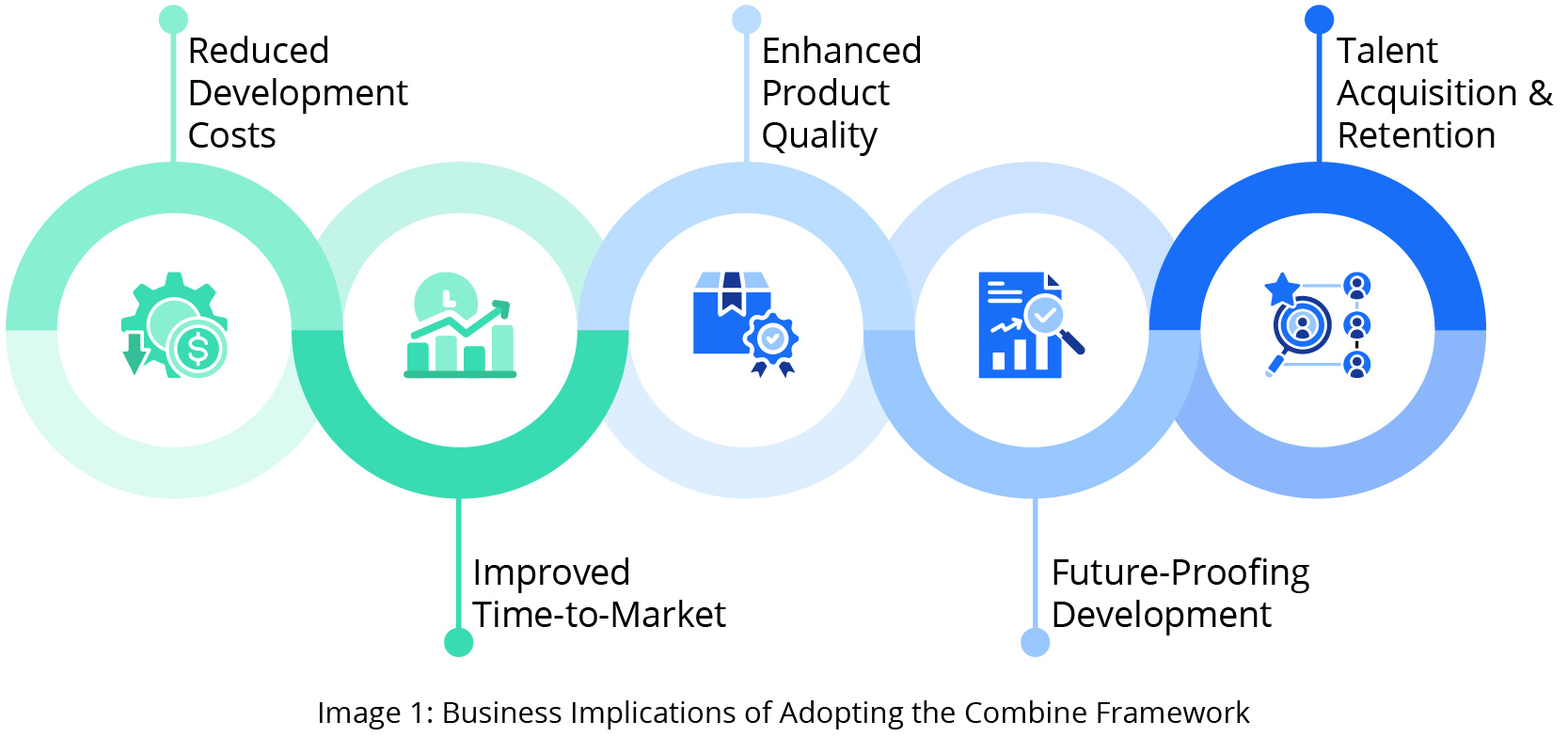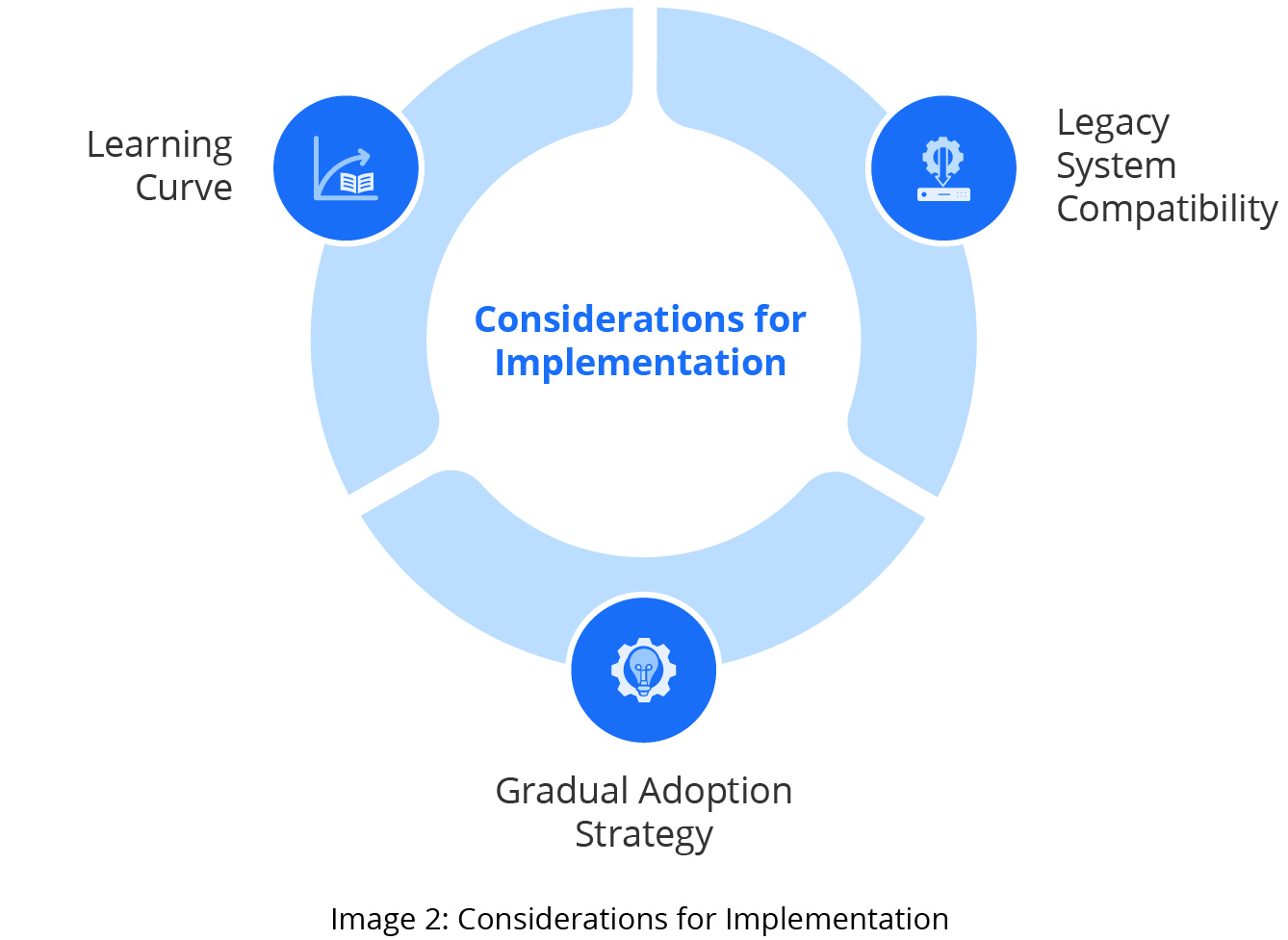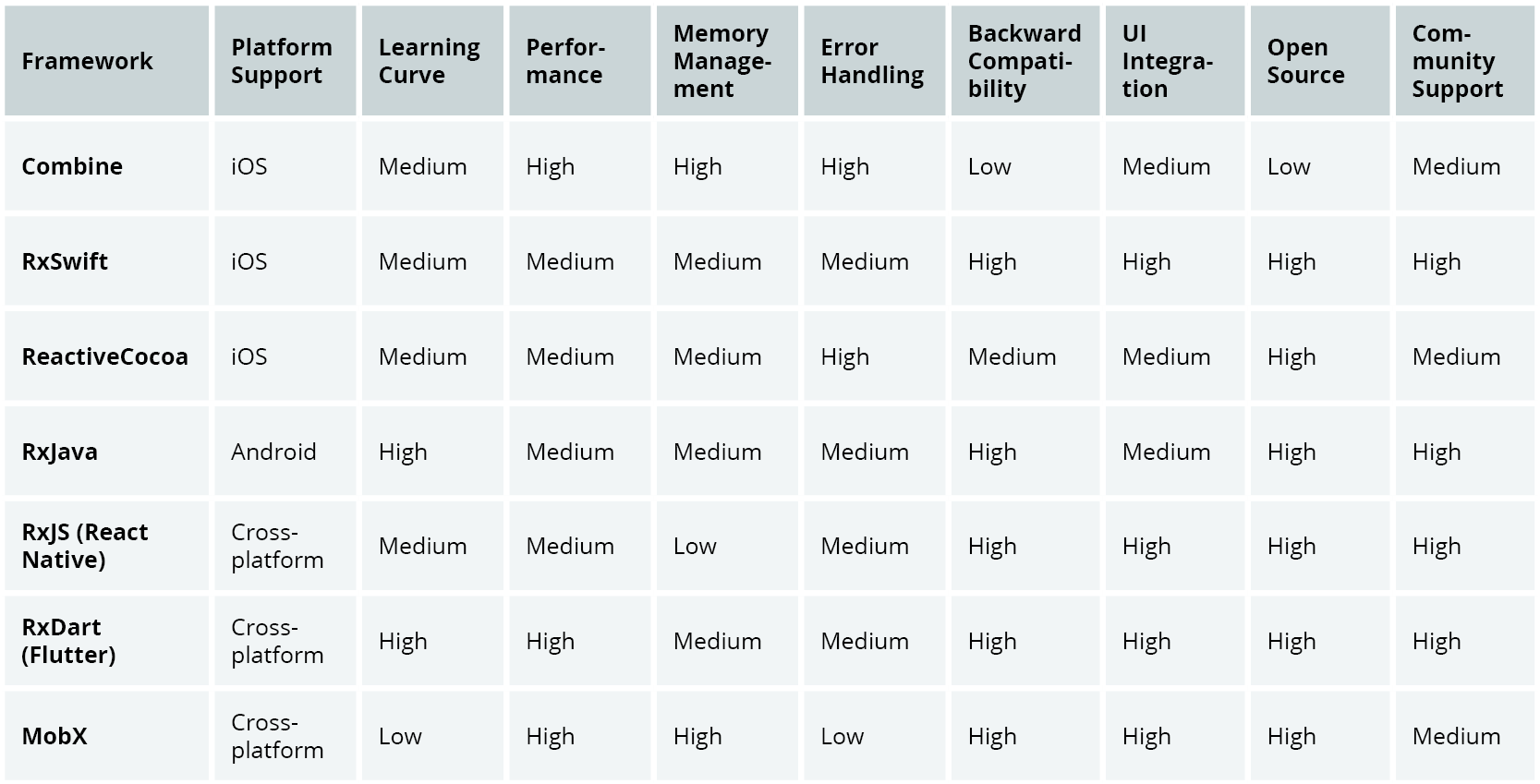iOS Reactive Programming: Streamlining Development for High Impact
Apple's Combine framework helps business leaders improve efficiency and user experiences by transforming iOS development, offering key advantages for organizations in the Apple ecosystem.
Traditionally, iOS developers relied on callbacks, completion handlers, and delegates to manage asynchronous operations. While functional, these methods often resulted in complex, nested code structures that were challenging to maintain and scale. This complexity translated into increased development time, higher costs, and potential quality issues.
Combine: A Paradigm Shift in Development
Combine, Apple's reactive programming framework, addresses many limitations associated with traditional development approaches. By adopting a declarative programming model, Combine offers several key advantages in the realm of declarative vs imperative programming:
- Improved Code Readability and Maintainability: Combine's structured approach to handling asynchronous events results in more linear, easier-to-understand code. This improvement in code quality can lead to reduced maintenance costs and faster onboarding for new team members.
- Enhanced Scalability: As applications grow in complexity, Combine's modular nature allows for more efficient scaling of features and functionality, potentially reducing time to market for new features.
- Centralized Error Handling: Combine provides a more streamlined approach to error management, potentially reducing the number of crashes and improving overall application stability.
- Better Resource Management: Combine's built-in memory management features can help prevent common issues like memory leaks, leading to more stable and efficient applications.
- Seamless Integration with Apple Frameworks: Combine's native support ensures optimal performance and compatibility with other Apple technologies, potentially reducing integration issues and associated costs.
Business Implications of Adopting Reactive Programming
For directors and VPs overseeing mobile development initiatives, the shift to reactive programming with Combine presents several strategic advantages:

- Reduced Development Costs: Improved code structure and error handling can lead to faster development cycles and fewer bugs, potentially reducing overall development and maintenance costs.
- Improved Time-to-Market: With more efficient coding practices, new features and updates can be developed and deployed rapidly, allowing businesses to respond more quickly to market demands.
- Enhanced Product Quality: The structured nature of reactive programming can lead to more stable and performant applications, potentially improving user satisfaction and retention.
- Future-Proofing Development: As Apple continues to invest in reactive programming paradigms, adopting Combine positions your development team to leverage future advancements in the iOS ecosystem more effectively.
- Talent Acquisition and Retention: Adopting modern development practices can make your organization more attractive to top development talent, potentially improving recruitment and retention efforts.
Considerations for Implementation
While the benefits of adopting Combine are significant, it's important to consider the following factors:

- Learning Curve: There will be an initial investment in training and upskilling your development team.
- Legacy System Compatibility: Combine is only available on iOS 13 and later, which may impact support for older devices.
- Gradual Adoption Strategy: Consider a phased approach to implementation, starting with new features or modules before full-scale adoption.
Combine vs. Other Reactive Frameworks
Combine is not the only game in town. Here is a brief comparison between Combine and other popular reactive frameworks:

Table 1: Comparison of Reactive Programming Frameworks for Mobile Development
Key Comparison Factors Explained
Platform Support
- Combine: High for Apple platforms only. Limited to iOS 13+ and macOS Catalina+. No cross-platform support.
- RxSwift: High for iOS, works on iOS 8 and above.
- ReactiveCocoa: Medium, primarily focused on iOS ecosystem.
- RxJava: High for Android, designed specifically for Android development.
- RxJS: High cross-platform support enables JavaScript-based native development for iOS and Android.
- RxDart: High cross-platform support, works on iOS, Android, web, and desktop with a single codebase.
- MobX: High cross-platform support, works with React and React Native.
Learning Curve
- Combine: Medium learning curve, requires understanding Swift and reactive programming concepts.
- RxSwift: Medium learning curve, familiar to developers who know reactive programming.
- ReactiveCocoa: Medium learning curve, requires an understanding of Objective-C/Swift reactive patterns.
- RxJava: High learning curve, requires a deep knowledge of Java and reactive programming.
- RxJS: Medium learning curve, accessible to JavaScript developers.
- RxDart: High learning curve, requires learning Dart and widget-based UI paradigm.
- MobX: Low learning curve, especially for developers familiar with object-oriented programming.
Performance
- Combine: High performance, designed with performance optimization in mind. Tests show ~40% more data throughput compared to RxSwift.
- RxSwift: Medium performance, well-optimized but not as performant as Combine.
- ReactiveCocoa: Medium performance, comparable to RxSwift.
- RxJava: Medium performance, optimized for Android, but requires careful subscription management.
- RxJS: Medium performance due to JavaScript bridge, though this has recently improved with its new architecture.
- RxDart: High performance as it’s compiled to ARM/x86 native libraries.
- MobX: High performance through fine-grained reactivity that minimizes re-renders.
Memory Management
- Combine: High efficiency without explicit disposal mechanisms.
- RxSwift: Medium efficiency, requires explicit DisposeBag management.
- ReactiveCocoa: Medium efficiency, similar to RxSwift.
- RxJava: Medium efficiency, requires careful subscription management.
- RxJS: Low efficiency, JavaScript garbage collection can introduce overhead.
- RxDart: Medium efficiency, uses its own memory management.
- MobX: High efficiency through automatic tracking and updating of observable state.
Error Handling
- Combine: High type-safety with explicit error types in Publisher definition.
- RxSwift: Medium type-safety can throw any kind of error.
- ReactiveCocoa: High type safety, similar to combining with explicit error types.
- RxJava: Medium type safety, similar to RxSwift.
- RxJS: Medium type-safety through JavaScript error handling.
- RxDart: Medium type-safety through Dart’s error handling mechanisms.
- MobX: Low type-safety for errors compared to reactive stream libraries.
Backward Compatibility
- Combine: Low, requires iOS 13+ or macOS Catalina with no backward compatibility.
- RxSwift: High, works on iOS 8+ and more iOS versions than most apps.
- ReactiveCocoa: Medium, better than Combine but not as extensive as RxSwift.
- RxJava: High, works across many Android versions.
- RxJS: High, supports older platform versions through JavaScript bridge.
- RxDart: High, supports older platform versions through compiled code.
- MobX: High, works with various JavaScript environments and runtimes.
UI Integration
- Combine: Medium integration, no first-party framework like RxCocoa, but integrates well with SwiftUI.
- RxSwift: High integration through RxCocoa for binding to UI components.
- ReactiveCocoa: Medium integration with iOS UI components.
- RxJava: Medium integration with Android UI components.
- RxJS: High integration using native components under the hood.
- RxDart: High integration through widget-based UI system.
- MobX: High integration with React and React Native UI components.
Open Source
- Combine: Low, closed-source Apple framework.
- RxSwift: High, fully open-source, with active community contributions.
- ReactiveCocoa: High, fully open-source.
- RxJava: High, fully open-source, with active community.
- RxJS: High, open-source, developed by Meta with community contributions.
- RxDart: High, open-source, developed by Google with community contributions.
- MobX: High, fully open-source.
Community Support
- Combine: Medium, growing Apple developer community but limited by platform constraints.
- RxSwift: High, large and active community with extensive resources.
- ReactiveCocoa: Medium, established but smaller than RxSwift community.
- RxJava: High, large community with extensive Android-focused resources.
- RxJS: High, large JavaScript and mobile development community.
- RxDart: High, rapidly growing community with strong Google support.
- MobX: Medium, active community especially in React ecosystem.
Conclusion
Adopting Apple's Combine framework and reactive programming in iOS development presents a significant opportunity for businesses to enhance their mobile application development processes. By embracing this modern streamlined development approach, organizations can potentially reduce development costs, accelerate time-to-market, and improve overall application quality. These benefits stem from improved code readability, enhanced scalability, and better resource management, all of which contribute to more efficient development cycles and potentially higher user satisfaction.
For business managers considering implementing reactive programming, it's crucial to weigh the long-term benefits against the initial investment in training and potential compatibility issues with older systems. A gradual adoption strategy, starting with new features or modules, can help mitigate risks while allowing teams to leverage the advantages of Combine. Ultimately, the shift towards reactive programming aligns with the evolving iOS ecosystem, positioning businesses to better capitalize on future advancements in mobile technology and maintain a competitive edge.
Contact us today to schedule an appointment to discuss your mobile development needs.



